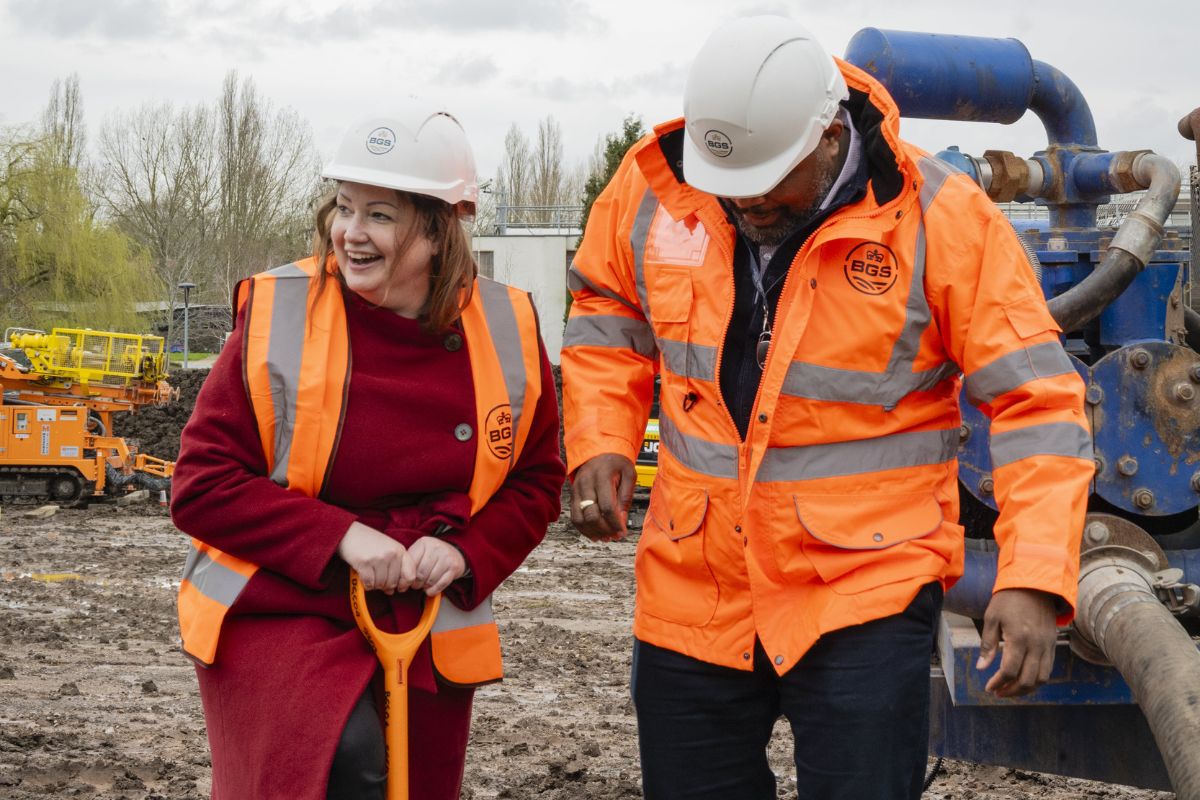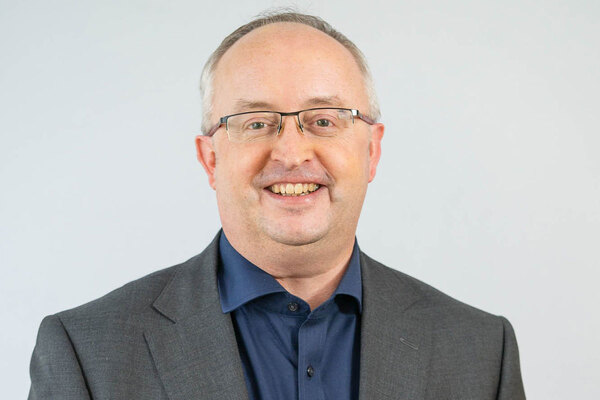British Geological Survey launches a "living laboratory"
The British Geological Survey (BGS) has broken ground on its geothermal heat pump project at its headquarters in Keyworth, Nottinghamshire, with the help of Ruth Edwards, MP for Rushcliffe.
The ground-source heat pump and living lab project is costing £1.7 million and is majority funded by the Natural Environmental Research Council (NERC) with a further contribution from the Government’s Public Sector Decarbonisation Scheme. The scheme is run by the Department for Energy Security and Net Zero and delivered by Salix Finance.
The renewable energy system will be the largest system of its kind in Rushcliffe, consisting of an array of 28 boreholes drilled to a depth of 225 m. It will save approximately 30 tonnes of carbon dioxide (CO2e) per year and reduce the organisation’s heating bill.
Forming part of BGS’s Keyworth campus decarbonisation plans, the proposed system will involve the removal of greenhouse gas-emitting gas boilers and will heat two buildings on the Keyworth site, where more than 400 members of staff work, including tenants and non-BGS staff.
The heating system will also benefit from advanced monitoring, which will assess the running costs and efficiency of the heat pumps and provide a case study for other organisations, such as schools and hospitals, that are thinking of switching from fossil fuel boilers to clean heat pumps.
The project will constitute a ‘living laboratory’, with state-of-the-art sensors deployed in the heat extraction boreholes and buildings. The technology will provide data in real time to help increase the public’s understanding of ground-source heat pumps and how they can be an effective solution for heating both new and existing buildings in the UK.
As part of this project, BGS will also be taking rock samples for further analysis to help get a better understanding of the flow of heat and water underground. The type of geology on site at Keyworth means that this information is transferable to a large part of the UK; the information generated will be of help to other, similar projects.
The installation of the ground-source heat pump is part of a wider project to help achieve UK Research and Innovation (UKRI)’s aim of reaching net zero by 2040. This also included the installation of 1000 solar panels above BGS’s car parking area in 2022.

Ruth Edwards, MP for Rushcliffe, said:
“I was really honoured to be asked to break ground on the new geothermal heat pump at the British Geological Survey in Keyworth. This is a hugely exciting opportunity to help decarbonise the public sector estate. I’m thrilled that we are trialling the technology here in Rushcliffe and that the data generated by the trial will be used to inform other projects around the country. Many congratulations to all involved!”
Mike Potter, senior environment manager at NERC, said:
“This inspiring project to decarbonise heat at the BGS Keyworth campus will reduce our reliance on fossil fuels. This is the first geothermal heat pump system to be installed on the UKRI estate and will support our journey to net zero in 2040. What makes this project extra special is the ‘living lab’ feature which will support data collection and knowledge sharing that could inform the heat pump sector as a whole.”
Daniel Crow, head of BGS estates and facilities, said:
“This exciting project gives us the opportunity to blend our observation of the subsurface with leading low-carbon heating. The disruption to BGS staff will be kept to a minimum, with short closures of a couple of buildings to allow for the installation of heat emitters. The drilling and heat pump installation is due to last around three months. The borehole installation should not impact on Keyworth site operations due to the careful planning and specification involved in the project.”



